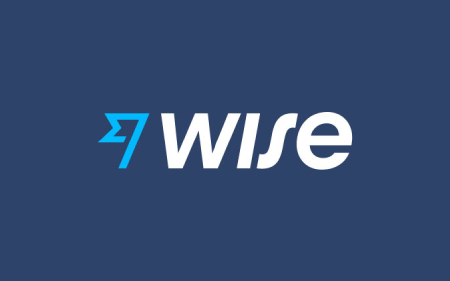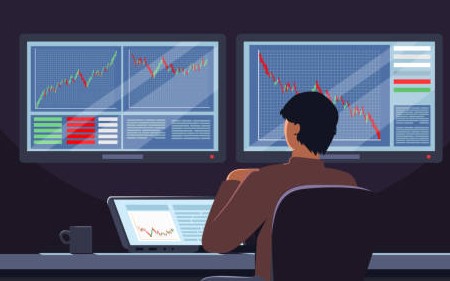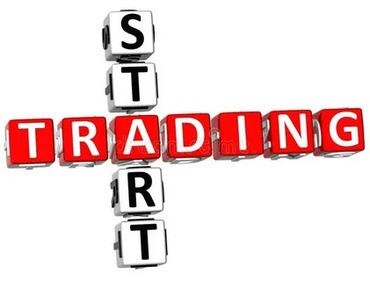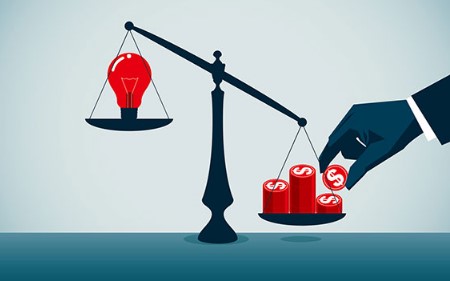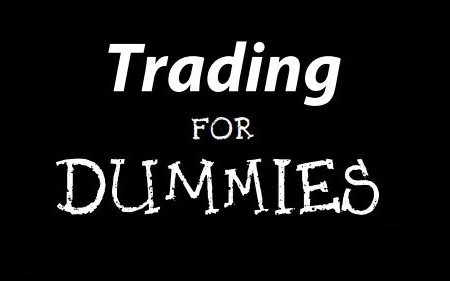Calculation of transactions in the foreign exchange market - spot
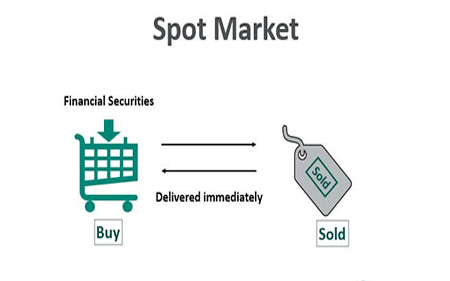 17 / 05 / 22
Visitors: 598
17 / 05 / 22
Visitors: 598
This forex market is the oldest, most traded and most liquid market. When Martín de Azpilcueta and Domingo de Soo of the University of Salamanca (15th century) were working on canon law and Madrid fairs, were faced with the need to exchange Florentine ducats for Iberian maravedi and real d'arzhan. The danger of transport justified, in the opinion of these famous ecclesiastics, the fact that the merchant creates wealth from money, which, obviously, until that time was strictly forbidden by canon law.
Plato and Aristotle strongly insisted on natural chrematic and mercantile chrematic, the latter representing the accumulation of money for themselves, and not just for the needs of life. Wealth accumulation will replace goods with money, usury will create money out of money, and merchants won't produce anything else.
Just look at Apple's balance sheet to understand that Apple doesn't care if its iPhones sell well. because when a Cupertino company reaches $60 billion in total sales, $15 billion is in services. There is no mention of the group's financial investments, which, with a jackpot of $267 billion in offshore accounts, should bring a small percentage.
But in the 15th century, Charles V had colossal wealth from the plunder of the South American continent (many thanks to Cortes, Pizarro, De Quesada, etc.), and something had to be done with this money. His confessor, Domingo De Soto, admits that the interest, which would later be called the interest rate, was the merchant's fair compensation. If at the beginning there were two essential conditions, namely that the payment of interest must take place before the loan transaction, and the lender must fully lend his wealth and not generate any other interest-bearing loans during the entire transaction, then the situation quickly changed. , and interest then became accepted by the Catholic Church. Money began to have a value that went beyond its intrinsic nature (gold, silver, shells, etc.).
In the Nicomachean Ethics, Aristotle warned that if money is used to measure the value of goods, then when they are exchanged, there is the risk that the use value of money, which is almost zero, will quickly be supplanted by an exchange value that is unlimited. Money buys everything. Currently, trading in the currency market reaches USD 6.6 trillion per day (trillions).
Currently, currencies are traded on the spot or futures markets in the form of spot (spot), swap (at maturity) and forward transactions worth trillions of dollars.
In the floating foreign exchange market we are interested in, the exchange rate floats freely ( net swimming) depending on supply and demand. The players are commercial banks, brokers, central banks and individuals looking to lose money.
Major currencies in ISO code: US dollar, euro, yen, pound sterling, Swiss franc, Canadian dollar, Australian dollar, Swedish krona, Norwegian krone, Hong Kong dollar, New Zealand dollar, etc.
A large number of variables affect exchange rates, many economic indicators such as GDP growth, inflation, balance of payments deficit, trade balance, etc. In addition, companies dealing with at least one foreign currency must calculate their < strong>stock position. This position allows you to know the exposure of the company to the currency and should allow it to cover itself in case of fluctuations. Debts and receivables in foreign currency are grouped together to determine the overall currency position:
– if debts and receivables offset each other, the position is said to be closed
– if accounts payable and receivable are not equal, the position is considered to be open. In this case, the company is exposed to exchange rate fluctuations.
Important point: value day is D+2 business day
A few dictionary terms should be observed:
point: this is the last increment of the currency pair (rightmost number). For example, if the price of EUR/USD goes from 1.1212 to 1.1213, the pair took one pip
- – digit: each currency pair is at the level of a different digit, it corresponds to a significant increment. If the price of EUR/USD changes from 1.15 to 1.16, i.e. in increments of 0.01, we say that the euro has taken a pattern
- - be long< /strong>: this means we have foreign currency
- – short position: this means we don't have it, so we'll have to borrow it
- – spread: this is the difference between the BID and ASK of the range, the seller's offer and the buyer's offer
- - Transaction numbers: they are expressed in Belgian (or Swiss). Seventy becomes seventy and ninety becomes ninety
- – a couple of mottos written according to leading motto and leading motto: EUR/USD means that the euro is expressed in US DOLLARS , i.e. 1 EUR = X USD is a OTC market, which means that sellers know buyers, transactions do not take place on an anonymous exchange
Screenshot of ALL QUOTE EUR/USD dated October 9, 2020 To read Bid/Ask: we sell at the lowest price, we buy at the highest price
Obviously you shouldn't be wrong about the direction of the quotes if you want to transact, because if EUR = x USD, then USD = x EUR.
There are seven "major currency pairs": EUR/USD, AUD/USD, GBP/USD, NZD/USD, USD/CHF, USD/CAD, USD/JPY.
In each country, the quote can be indefinite or indefinite:
- – indefinite: this is the number of national currency units corresponding to the foreign currency unit. For example, in the Eurozone we will say: 1 USD = 0.85 EUR
- - to a certain: this is when a unit of the national currency corresponds to a certain number of foreign currency units. For example, this applies to EUR/GBP
Always specify the leading currency when making a transaction. If the quote says 1 XXX = 2 YYY, it means that 1 AAA is worth 2 YYY, so the AAA currency is in the lead.
For example, EUR/GBP=0.8250/0.8252. The first price is the selling price of the first currency mentioned, here the euro. The second price is the purchase price of the first currency. In explicit terms, EUR/GBP=0.8250/0.8252 means that one Euro (EUR) is sold at 0.8250 British Pounds (GBP) and one Euro is buyed > at 0.8252 pounds.
The selling price is always lower than the buying price.
If we are suffering from a range, we always buy high and always sell low. A range means that there is a seller ready to sell immediately at that price and there is a buyer ready to buy immediately at that price. If we enter the range, we commit the transaction at the prices specified in the range.
Example: EUR/GBP 0.8250/0.8252.
You should always place yourself in the currency that is leading the other, i.e. which currency unit is expressed in terms of another currency unit.
Here 1 euro = 0.8250 pounds sterling or 1 euro = 0.8252 pounds sterling.
So if a customer is selling pounds sterling, it means he is buying euros. If he is buying pounds sterling, this means he is selling euros.
If the client wants to buy leading currency, euros, he will pay the maximum price! Principle: the customer is always accepted! So the euro would be worth: £0.8252
If the client wants to sell the leading currency, he will get the lowest price. strong>: £0.8250
Cross-currency is possible when the pairs are not the main ones. For example, you want to exchange Norwegian krone for Swedish krona, but you don't know the NOK/SEK pair. On the other hand, EUR/NOK and EUR/SEK pairs are always indicated. Therefore, you can withdraw the NOK/SEK pair.
Series of illustrations:
For a French forex trader, the following quotes are definite or indeterminate:
- – USD/EUR 0.7973 – 0.7974 –> Indeterminate
- – GBP/EUR 1.4922 -14923 –> Indeterminate < br/ >– EUR/USD 01.1423 -1.1425 –> Some
For a US FX trader:
- – TRY/USD 0.6778 -0.6780 –> Uncertain
- – EUR/USD 1.1423 -1.1425 –> Uncertain
- – USD/CHF 1.3747 – 1.3748 –> Some
For a London FX trader:
- – GBP/USD 1.6624 -1.6625 –> Definitely
- – EUR/GBP 0.687 2–0.6874 –> Uncertain
- – GBP /CHF 2.4851–2.2853 – > Some
In regards to forwarding quotes, if a client requests quotes for the following currencies, what prices will we give them?
Customer wants:
- buy US dollars with euros. EUR/USD quote: 1.1423 -1.1425 --> so he sells the euro for the dollar at the lowest price: 1.1423
- sells the yen for the dollar. USD/JPY quote: 110.17-110.18 –> he will buy USD for JPY at the highest price: 110.18
- he will buy GBP for CHF. Quote GBP/CHF: 2.2851 -2.2853 –> he will buy GBP at the highest price: 2.2853
- sell GBP against USD. Quote GBP/USD: 1.6622 – 1.6623 –> he will sell his GBP at a minimum price: 1.6622
- will sell CAD for a dollar. USD/CAD quote: 1.3307 -1.3308 –> he will buy at the high of the US dollar against the CAD: 1.3308
- buy the AUD against the US dollar. Quote AUD / USD: 0.7070 -0.7072 –> will buy AUD against the US dollar at a maximum: 0.7072
- sell the Swiss franc against the euro. EUR/CHF quote: 1.5697- 1.5698 –> he will buy the maximum euro against the Swiss franc: 1.5698
- he will sell the euro against the yen. Quote EUR/JPY: 125.81-125.83 –> will be sold at the minimum EUR price for buying JPY: 125.81
The client wants to receive an offer to trade Norwegian kroner for Swedish krona. The quotes are as follows: EUR/NOK 8.2388 - 8.2392 and EUR/SEK 8.9688 - 8.9692. What quote can we offer?
We will have to sell NOK to buy EUR: so if EUR/NOK is 8.2388-8.2392, then we buy EUR at 8.2392
Then we will have to sell EUR, to buy SEK, so if EUR/SEK is 8.9688 – 8.9692, then we sell EUR at the lowest price: 8.9688
Or: NOK = 8.9688/8.2395 = 1.0885 SEK (Swedish krone purchase price in EUR / Norwegian krone sale price in USD)
The client requests a quote to buy Norwegian krone (NOK) against yen (JPY) knowing that the quotes are: EUR/NOK 8.2388 – 8.2392. EUR/JPY 125.80–125.82. What price are we going to give?
We will have to sell JPY to buy EUR so buy high: 125.82 and sell EUR to buy NOK so sell low at 8.2388
Either 1 NOK = 125.82/8.2388 = 15.2716 yen
Exchanging one currency for another:
- Exchanging £103,000 for US dollars knowing that the pound/US dollar = 1.6626-1.6628 —> the pound sterling is worth more than the US dollar, so the amount is pegged to be higher
- - if £1 sells for $1.6626 then 103,000 * 1.6626 = $171,247.8
- Exchange USD 1,000,000 for EUR knowing that EUR/USD=1.1423-1.1425 --> EUR is worth more than USD, so the amount is bound to be less
- - If EUR 1 buy for 1.1425 US dollars, then 1,000,000 * 1.1425 = 875,273.52 euros
- Exchanging 125,000 euros for Swiss francs, knowing that euro/CHF = 1.5698-1.5703 --> the euro is worth more than the Swiss franc, so the amount will definitely be higher
- - if 1 euro sells for 1.5698, then 125,000 * 1.5698 = 196,225 Swiss francs
- Exchanging AU$500,000 for US dollars knowing that AU$/US$ = 0.6154 - 0.6158 —> AU$ is worth less than US$, so the amount is bound to be less
- - if 1 Australian dollar sells for 0.6154, then 500,000 * 0.6154 = 307,700 USD
- Exchanging 250,000 euros for US dollars, knowing that EUR/USD=1.1423-1.1425 --> the euro is worth more than the US dollar, so the amount will definitely be higher
- - If 1 euro is sold for 1.1423, then 250,000 * 1.1423 = $285,575
Knowing how to calculate the result of a foreign exchange
A client has 100,000 euros in cash.
He sells 100,000 euros for dollars. EUR/USD quote: 1.1400-1.1403.
He buys shares at $100 per share.
A month later, the shares are quoted at the level of 50 US dollars, and the EUR/USD rate: 1.02-1.03.
What is the profit or loss associated with a change in the exchange rate?
At t0 he sells euros: 100,000 * 1.1400 = $114,000
He buys 1140 shares at $100
At t+30 the share has lost 50% of its value: 1 share = 50 USD
1140 shares at 50 USD = 57,000 USD
At t+30 EUR/USD quote 1.02-1.03
If he buys EUR at 1.03, 57,000/ 1.03 = 55,339.80 USD
The US dollar is more expensive, so the euro fell: the buyer still makes a profit on the exchange: (Vf/Vi-1)*100 = (1.03/1.14- 1) *100 = 9.64%
This increase in the exchange rate is due to the depreciation of the euro
Know how to calculate margin
A client calls you to buy foreign currency knowing that the bank applies 0.15% margin to foreign exchange orders: this means that he buy even highert (+0.15%) and he will sell even lowers (-0.15%)
At what price will you give him, if:
– The client wants to buy euros for dollars EUR/USD: 1.2541-1.2542
1.2542*(1+0.15%) = 1.2560 US dollars
The client wants to sell Australian dollars for yen. AUD/JPY: 1.1177-1.1178
1.1177*(1-0.15%) = 1.1160 AUD
– The client wants to sell Icelandic kroner against the British pound sterling. GBP/ISK: 127.581–127.582
127.582*(1+0.15%) = 127.773 ISK
A complete list of unscrupulous brokers, that we do not recommend working with is available here.



